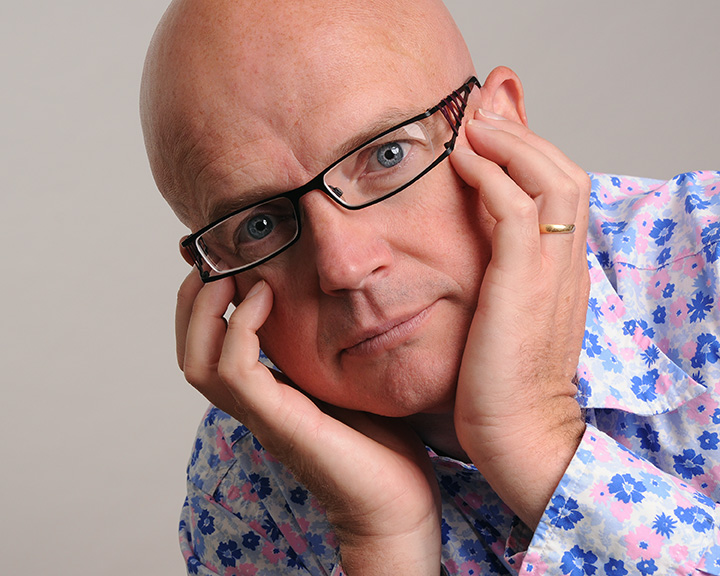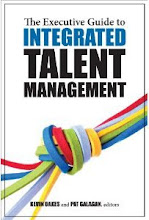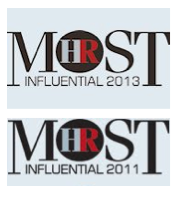I interviewed Michael Porter at WOBI London this week. This was partly on my main areas of interest in his work and the links between our ideas, and also the points made in his presentations and recent articles:
So to start with, there are increasing claims that it is becoming harder to gain to sustainable competitive advantages for example from Rita McGrath on the end of strategy. Are you seeing this?
MP: No, I don’t understand what Rita is saying. The data is very clear that there are wide and sustained differences in profitability in the same industry. And that it lasts for a long time, not all the time, sometime it’s easy to imitate. And it’s ubiquitous throughout the economy. And I get a little tired being everybody’s foil for everybody to make their name.
There is going to be a dynamic about how long you can sustain things. IKEA has publicly disclosed their strategy for at least 30 years and no one else has come close to it. Because the things that they do are very hard to construct and completely different to the way any other furniture company operates because they’re made those trade-offs.
Part of sustainability is about things you can control. And part of it has to do with what you’re basing your advantage on. Those things can be very different. If you’re Google and you’re competing in the search business it’s a natural monopoly, the more data you have the more valuable your search is. And if you get out ahead nobody will ever catch you. But for other things, if you just have some good people providing a certain level of customer service or support then other firms can find good people to and maybe do it even better by enhancing the technology.
I think there is a highly variable set of circumstances. Every case is different. But you do see companies that have sustainable advantage. And right now, the big GAGA, these big platform models. the whole idea is scale, if you get too big they can’t catch you because your scales too big. It’s a self reinforcing process. So for Uber, the more drivers they have, the less you have to wait, the more convenient the service, There are a lot of businesses now that people see that have these scale effects on the demand side. We used to see scale effects on the supply side but now we’re seeing the demand side can create these scale effects. The trouble with these is that we’re in another internet bubble type phase where we have all these companies that are trying to play these games and the they’re finding out they can’ make money.
And if you apply the five forces model to something like Uber, you’ll see that who is going to capture the profitability is the drivers. To make money you’ve got to able to charge a price that’s great than full cost. We forgot that during the internet period. People were keeping score and thinking you were a success if you had a website with massive number of visitors. But that doesn’t actually produce revenue.
What about the suggestions that the resource based view is becoming more important?
MP: The resources are just one level down. All the things I was talking about today, how you compete, how you do your HR, how you do your service, all those things are that strategy. That’s the choice and actual impact you’re having on the world. All the resources allow you to do those things. So if you’re going to have a superior salesforce with superior technical support then you need a certain type of resource, certain people in order to do that. It involves a set of resources and technology that enables that activity.
Competition is about what you actually do in the marketplace to achieve value for the customer. Then you back up and that’s where the resources are. All the components in the value chain are going to be resources. And if they’re good resources they can be an advantage, part of doing it better. So I never thought the resources was a competing view of strategy. It’s about the level at which you’re looking at the analysis. There is a cause and effect. We can keep on going further and further back up, keep going upstream to look at cause and causes.
We are expanding all the time our understanding of how to best configure and manage and motivate people to do these things. Right now the biggest thing about people is making them excited about working for the company and a lot of that relates to the culture view of the world. Hopefully employees will be pushing their companies to be more shared value and less window dressing. So I’m liking the trends I’m seeing now. More and more people are thinking this way.
For me it’s all about ideas. It’s ideas that move the world and it’s ideas that help people do things better. So I’m in the ideas business, with the idea that the ideas are always evolving as opportunities and technologies change.
So are things like core competencies, or McKinsey's Organisation Health an important idea in strategy?
MP: What does core competency mean, what does it really mean? It means you’ve got some asset and some way of doing something that is distinctive and unique, it’s the same thing, it really is. These people are making up distinctions that aren’t real. It’s not that they not good people I mean they’re great people. And I think different lenses and different ways of looking at things and explaining them is very helpful as it forces people to figure out what they really think and where the cause is and where the effect is and so forth. But unfortunately in the management thinking industry there’s all kind of efforts to create distinctions where maybe there isn’t such a distinction and actually it’s all the same thing. I’m not mad at anyone, I’m just trying to help people understand not to think that if you use a resource based view of a firm you don’t need a strategy. It’s just about where the roots of the advantage are embedded.
You also suggest in ‘Towards a Dynamic Theory of Strategy’ that creating a theory of strategy involves a the chain of causality. Is it valid or useful to think about customer value chains or workforce / organisation value chains which inform your business value chain?
MP: That’s fine. Strategy is about what you ultimately do at the end of the day to compete in the market How you ultimately get there, I think there is a lot we can learn about that. But it’s so unique and there are so many different nuances. It’s been less powerful but I’m totally of the view that to get to this kind of salesforce delivering this type of value with these kind of unique strengths there’s a long process, you’ve got to hire these people, you’ve got to figure out how to hire them and how to equip them with technology and so forth. Underneath every piece of the value chain there’s another value chain like activity which are the steps you take to get there. And as get more about insight about management we have more insight into what some of those things are.
What’s helpful is that we’re getting up the causal chain. Strategy is about what you do in the marketplace but how you get to doing that is a fascinating question. That’s why I’m interested in the dynamic view of strategy. We also find that very few companies that have a great strategy figured it out in advance. It’s partly some core insights that you have and then you learn how to do it better, so it’s a dynamic process.
And has the role of business leaders and CEOs been changing? For example, Gary Hamel was talking about everyone in a company needing to think strategically. Is there now a need to get more people involved in strategy, rather than just the CEO or a small planning department?
MP: In general a top down view to strategy doesn’t work so well because the people who need to work on it, need to execute it, need to contribute to it, need to be involved in fine tuning the net view.
What has always been important and always will be important that everyone involved in the company needs to understands the strategy. Somebody needs to be able to articulate it, make is explicit, make sure it comunicated, and in multiple ways engage all the different parts of the organisation. Or you’re going let each function of the company drifting off in whatever direction is cool in that function.
What do CEOs do? What’s the job, what’s success? What are the activities involved in this role and how do they work with these massive number of other people involved in these companies as they can’t engage everyone, how do they best create leverage? And strategy turns out to be one of the major uses of CEO time. Because it’s the way they get alignment and get all the people in the organisation to understand who we are and what we do and who we’re serving. Otherwise they’re taking a risk that people drift of in whatever direction is cool because they get a deal but the deal’s not consistent with the where the company is going.
Strategy is one of the tools for developing social capital, for getting alignment and most CEOs invest a lot of time in that, they particulate activity in the strategy process, they’re always out there talking about the strategy, and reminding all their employees whenever they do out and meet with thousands of people, they’re telling a consistent story and they want everyone to hear the same story.
CEOs spend a lot of time on strategy, reviewing businesses, operating reviews, they start with the numbers but also understanding how well is this business doing and why and usually the analysis ultimately it cuts through to strategy issues.
So I’m fascinated by the role of a leader in a company employing 200,000 people - what do you do? We have these enormously complex enterprises now, and lots of really small interesting companies that are growing up. But the key thing we have to have to do, we have to have some higher level guiding principles otherwise we get lost in idiosyncratic discussion that’s not anchored in the real world and what competition is really like - for example, if you are going to have a sound strategy you need to figure out what customers you’re going to serve and so on.
Ultimately, strategy is a creative act, it’s a group of people figuring something out that nobody figured out before because if someone had figured it out it wouldn’t be distinctive and it wouldn’t lead to success. So I always talk about strategy as an act of innovation, involving a lot of different people in a complex system called a company. So how do you get people opened up to think creatively?
But between creating the strategy and implementing it, does it need to come back to a small group of people or person:
MP: Somebody has to be able to see the whole and help articulate articulate the whole and make sure there is alignment across all the functions. Any part of a company, product department, quality control, sales force, there’s a certain logic in salesforce management and without clarity on the strategy they’ll just do that. So if the cool thing to do in marketing now is to do social media they’ll just do that. But then the question what is the purpose of the social media and to what is it contributing and how does that work? So there is a need for a holistic thing to ensure that the whole company is contributing in some consistent way to some consistent strategic positioning.
And does that person who can see the whole need to be the CEO?
MP: Not necessarily, there are multiple levels of strategy, business strategy, group strategy, etc. But ultimately the CEO of that business unit is the only one who has right perspective. Everyone else at last somewhat worried about their part. They want to preserve their importance as Chief Marketing Officer or Head of Logistics. The CEO is the only one who is actually neutral and only cares about does all this come together into something distinctive and important and are we reinforcing ourselves rather than fragmenting ourselves?
You can have a lot of people involved in the process but ultimately the people need to come together with the overall company success at issues, not their function, how many people they get to hire. You need to get people away from the functional logic. So there’s a certain good practice on what a good supply chain looks like. Well, it tuns out a good supply chain really depends on the strategy. Do you need to be there every day, do you need to show up on time? - there’s lots of different variations in the supply chain. There’s no such thing as a good supply chain, only the supply chain for this strategy. That’s a point I have to make all the time because people don’t understand that.
We talked about a few other things indlcuing national competitiveness, Brexit and clusters, but I think the above points are the main ones which will interest readers of this blog.
These were my other posts on Michael's presentation:
- Consulting Research Speaking Training Writing
- Strategy - Talent - Engagement - Change and OD
- Contact me to create more value for your business
- jon [dot] ingham [at] strategic [dash] hcm [dot] com

















































